LUNARK: The Art of Movement
Realism has often been a key aspect in video games, from gameplay mechanics to visuals and physics. While certain game genres such as sports or racing have always seemed to align with this approach, others favored a more fantastical interpretation of reality. The platformer genre, for example, has long been associated with cartoonish physics. As time passed, however, the lines began to blur, leading to the emergence of new sub-genres of side-view 2D games such as action-adventures, puzzle-platformers, and, yes, cinematic platformers such as LUNARK.
One of the unspoken rules that defines the cinematic platformer genre is to stick to reality. To do so, the game will display detailed and realistic animations, and will use a high number of frames. The actions performed by the main character follow the laws of physics and if they don’t, the game’s context would justify it in order not to spoil the player’s immersion.
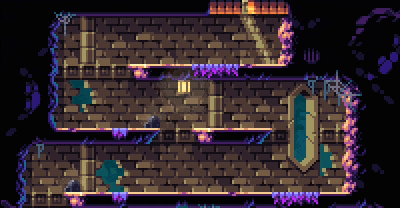
Comparing the controls of LUNARK to those of a game like Mario or Sonic, you will immediately notice these differences when holding the controller. For example, while it may be possible to turn around in mid-air or fall from an impressive height without damage in Mario, this isn’t the case in LUNARK.
Let’s go back to my discovery of the genre in 1991 with the first Prince of Persia, by Jordan Mechner. I don’t remember ever comparing this game with Mario or Sonic, which I also enjoyed very much. For me, it was a different experience, a different challenge. Indeed, since the character’s mobility was subject to stricter rules, we had to consider our surroundings in a more methodical and calculated way.
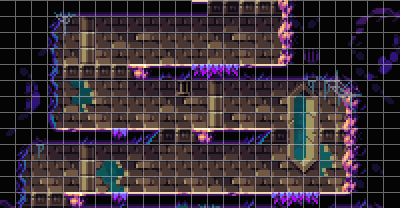
You couldn’t control the Prince as easily as Mario; on the contrary, you felt like you had to force him to execute his moves. You may imagine that this would make you feel disconnected from your character, but in fact the opposite was true; because of this control scheme, your character seemed more human than a cartoon character. Every action felt real and deliberate, and because of this inertia and momentum, you felt the weight of your character as if it were a real human being. This feeling, coupled with the realism of your character’s animations, is what distinguishes the cinematic platformer genre and, above all, what connects you to the character. The deliberateness of the controls – and some punishing consequences – gave the game experience a certain tension, a heightened level of stress, but also a much more intense satisfaction when you executed your actions without error. All these factors added up to an unparalleled immersion for the time. For me, jumping over rows of spikes in Sonic will never be as emotional, thrilling, or personal as in Prince of Persia. You were the Prince, or Conrad in Flashback, or Lester in Out of this World.
Of course, that was all 30 years ago, and creating an old-school cinematic platformer today brings a new challenge: managing the expectations of modern players. My design choices attempt to follow the winding road that separates nostalgia from today’s expectations.
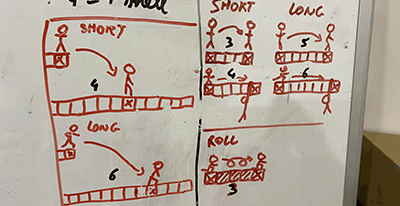
Prince of Persia introduced most of the moveset: walking, running, turning around during a run, performing a short jump, jumping with momentum, grabbing a ledge if a jump is too tight, climbing up/down a ledge, ducking, interacting with an object, and sword fighting. To those, Flashback added the ability to automatically grab a ledge during a run, turn around while dropping, roll, throw certain objects, use a shield, and fight in close quarters, plus the sword was changed to a gun. Flashback was developed with the Sega Genesis in mind, but was also released on computers like the Amiga, whose joysticks were still often only one button, so the controls might have been influenced by this, resulting in using the D-pad to jump or roll during a run instead of using an action button.
Having a plethora of buttons on modern controllers, my first decision was to assign the forward jump and roll to dedicated ones. In my opinion, nowadays, complicated thumb movements may be acceptable for special moves in a fighting game, but not really for such basic actions.
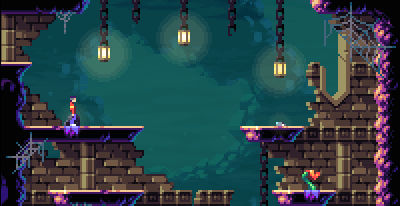
So why press Up for climbing to a ledge above you, when it is technically a jump? Why didn’t I use the same button as the forward jump? Though indeed the two actions are technically jumps, they are completely different animations, unlike in a Mario or a Sonic game. This also posed some problems with level design: does the player want to jump forward or grab something overhead if the button is pressed while under a ledge (without adding yet another button)?
Another classic holdover is the contextual button to hang onto a ledge. In LUNARK, the player has to keep a button pressed (by default the right trigger) to hang from a ledge, and the moment they release it, Leo drops. I like that it’s analogous to the real world, since extra effort is required by Leo’s hands to continue hanging. It then made sense to hold the same button to run, since running and hanging are actions that can very often be linked together.
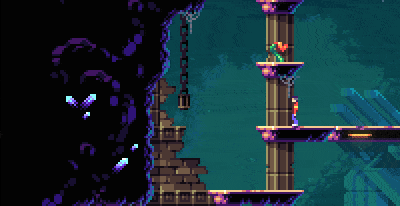
At the same time, I tried to make the controls more reactive, which is quite challenging in a cinematic platformer. In order to maintain the realism, an animation has to end before the next one begins. This sometimes creates a feeling of delay in the inputs.
So what are the parameters I used to make everything feel more snappy and modern? Here are some examples: Whereas Flashback or Prince of Persia require two tiles between each jump opportunity, there will only be one in LUNARK. Additionally, your character will automatically turn to face a ledge when you want to climb up or down, and the animations that make up these actions will flow very quickly. You will be able to shoot directly without having to previously draw your weapon, which will instantly re-holster as soon as you start walking or running, and when you’re rolling with your weapon and you hit a wall, there’s a good chance you’ll be chased by an enemy, so Leo will automatically turn around, ready to shoot. In the same vein, if you walk towards a cliff, Leo will stop and hesitate (once!) if the fall is going to be fatal. And let’s not forget that on top of that, you can remap your buttons to your liking (to some extent)!

I spent as much time as I could adding quality-of-life improvements to the cinematic platformer experience, and I hope that the result will satisfy both purists and new players who will discover the genre with LUNARK, which is available now on Switch, PlayStation 4, PlayStation 5, Xbox, and Steam, in addition to itch.io. —Johan Vinet
Get LUNARK
LUNARK
Join the revolution in this cinematic sci-fi platformer
| Status | Released |
| Authors | WayForward, Canari Games |
| Genre | Platformer, Action, Adventure |
| Tags | Atmospheric, cinematic-platformer, GameMaker, Indie, Pixel Art, Retro, rotoscope |
| Languages | German, English, Spanish; Castilian, French, Italian |
| Accessibility | Configurable controls |
More posts
- LUNARK v1.1.0 Update NotesMay 02, 2023
- LUNARK: Going UndergroundApr 25, 2023
- LUNARK: City LivingApr 18, 2023
- LUNARK: What Is a Cinematic Platformer?Apr 13, 2023

Leave a comment
Log in with itch.io to leave a comment.